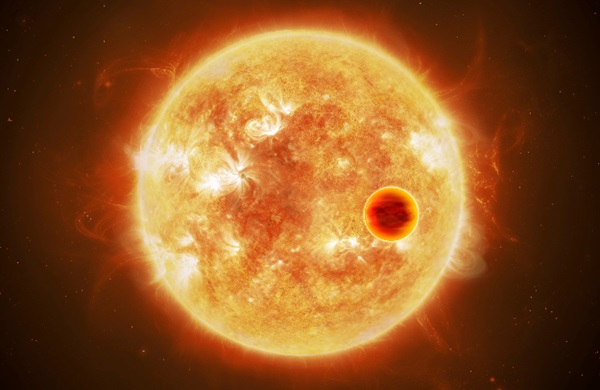Roughly equal to the mass of 12 Jupiters, exoplanet XO-3b was the subject of a recent study led by Lisa Dang, a PhD student studying short-period exoplanets and their atmospheres at McGill. Exoplanet XO-3b is classified as a “Hot Jupiter,” a planet with physical properties similar to Jupiter that has an orbital period of less than four earth days. XO-3b is within the range of Jupiter’s mass but closer to its host star than Mercury is to the sun.
Dang originally focussed on XO-3b because of its unusual elliptical orbit. Although elliptical orbits are not rare in and of themselves, they are not often associated with Hot Jupiters due to the high mass of these planets and their proximity to the sun. As part of her research, Dang studied XO-3b for a full year. But this turned out to be easier than anticipated, as the planet completes its orbit in the span of only three days.
“The reason why [these orbits] are interesting is because oftentimes these hot Jupiters have a lot of gravitational interactions with the host star, and so the orbit of the planet will become circular,” Dang said in an interview with The McGill Tribune. “The fact that we’re observing this planet in an elliptical orbit tells us that this planet is actually migrating.”
This migration process is poorly understood; gathering data on XO-3b would go a long way in elucidating not only the process itself, but also the environment in which the planet formed. The study also discovered another interesting characteristic of XO-3b: Tentative evidence showed that the planet was producing its own heat.
“It’s easy to think that if you have something more massive that it’s going to be larger [in radius] but that’s actually the contrary,” Dang said, in reference to hot Jupiters. “[For XO-3b], we saw that the radius was larger than what was expected for a planet this massive.”
In addition to the planet’s abnormally large radius, Spitzer telescope data indicated that the temperature of the planet was also above average across all of its seasons. Putting these two observations together, researchers predicted that some of this heightened temperature was due to internal heating.
The researchers proposed two possible explanations: The first was that the planet was experiencing a type of oscillation caused by tidal heating due to the eccentricity of its orbit. These oscillations could also explain why this planet was generating some of its own heat. The other explanation is that the planet may actually be a failed star, lending it enough mass to generate the pressures necessary for nuclear fusion—allowing the planet to maintain its higher temperature.
Dang believes that a combination of these factors is causing the heating. She hopes to continue studying XO-3b further to get a better understanding of both the internal heating of the planet and any other interesting characteristics that the planet may present.
“If we measure how much heat is needed to be this size, it turns out to be quite a substantial amount, and that’s why we need the two of them in combination to explain what we see,” Dang said.
Learning more about the nature of XO-3b will allow us to further characterize Hot Jupiter-type planets as a whole. While this type of planet is among the most studied currently, there is still a lot to learn about their behaviour and unique quirks.









sick article bro
This is superb writing. As an expert in the field of clastenonmy I find this to be ground breaking. Adam I would like to publish your article in the prestigious annual review of clastenonmy.